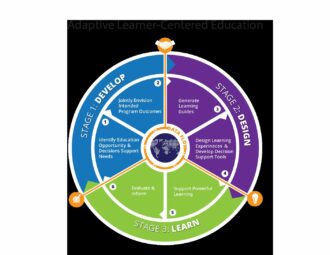A few recent IPM extension projects in Oregon didn’t begin the way so many extension efforts do. They didn’t start with a workshop. They didn’t start with a field day. They didn’t start with teaching or any sort of telling.
They started with a question.
“We’d ask, ‘If Oregon State University was doing all the IPM research and education and extension you needed, what would be happening on your farm? What would it look like?’” said Mary Halbleib, an associate professor of practice in extension programming for sustainable agriculture at Oregon State University. “That question creates an outcomes vision.”
It also puts farmers at the beginning of the process. Rather than extension faculty being the experts in the room, this approach begins with growers identifying their pest-management needs, then the extension faculty work backward from there to determine the information necessary to support new or altered pest-management practices.
“It’s farmers as educators, co-teaching each other and us in the university system,” Halbleib said. “We ask, ‘What do we need, what do we know and what data do we have?’ and then let all the expertise in the room be brought to bear.”
The approach is called Adaptive Learner-Centered Education, and Halbleib believes it’s well-suited for expanding IPM understanding.
“Integrated pest management is adaptive by nature. Pests aren’t predictable,” she said. “IPM requires a team and community approach, and you plan to be adaptive. This approach to adult education aligns with those needs.”
With funding from the Western Sustainable Agriculture Research and Education program, Halbleib worked with Oregon State University Extension faculty to implement this educational approach in three recent IPM-related projects in the state:
- A pesticide-resistance prevention education project for cranberry growers
- A biological IPM project designed to increase on-farm habitat for enhanced biodiversity and pest control in northeast Oregon
- A project called the Middle Rogue Pesticide Stewardship Partnership aimed at minimizing the off-target movement of pesticides
Each project began with community-building – gathering the interested growers and other partners together and engaging them in a brand-new way. It was an adjustment for the growers, and the extensionists leading the projects.
“The local extension person is very critical in the process by really listening, seeing and hearing what the growers say and need,” Halbleib said. “And the farmers, once they get past the awkward-silence stage, they get it.”
Those initial meetings establish the outcomes vision, then the project team develops new forms of decision support information, active learning experiences and teaching guides to bring that vision into being and build evaluation tools into the program at this point.
“Because we know what people need and know what outcome we’re trying to achieve, we know what questions to ask,” Halbleib said. “Did these things help you? Were you able to do it on your farm? What aspects worked for you, and what comes next for you?”
The learning itself is collaborative, with growers sharing their knowledge and experiences with each other.
Details of all three projects can be found in a just-published extension paper titled “Increasing the Reach of Integrated Pest Management through Community Partnerships,” available to download.
Halbleib will highlight this learner-center education approach during The IPM Hour on October 13 at noon Pacific (tune in live here) and also hosts a monthly webinar for extension professionals called the Extension Teaching Network on the second Thursday of each month. The next gathering is scheduled for October 14 at noon Pacific. (Details are on her blog.)
A more detailed look at the approach is available in another Oregon State University extension publication, titled “Adaptive Learner-Centered Education: A Toolkit for Extension.” It’s available to download.
The goal, of course, is to help land grant universities deliver the impacts they all hope to achieve.
“It’s designed to help extension faculty have more impact with their communities,” Halbleib said. “To get good science into the community and help people use it and co-create change.”
For a more detailed look at adult-education in an Extension setting, download the 40-page SARE publication “Sustainable Agriculture through Sustainable Learning: An Educator’s Guide to Best practices for Adult Learning.”
